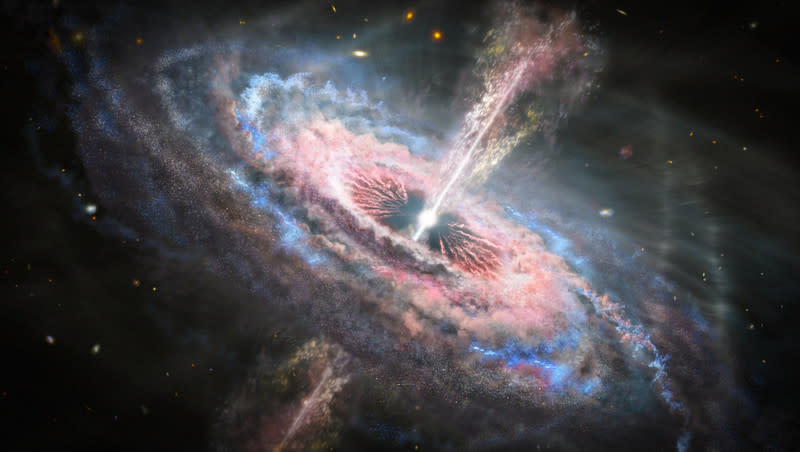Time moved more slowly in the early days of the universe, study finds

During the universe’s first billion years, time moved five times slower when compared to today, according to a study published in the journal Nature Astronomy on Monday.
Professors Geraint F. Lewis of the Sydney Institute for Astronomy in Sydney, Australia, and Brendon J. Brewer of the University of Auckland in Auckland, New Zealand, made the discovery by studying ancient black holes called quasars.
In a statement, Lewis said, “If you were there, in this infant universe, one second would seem like one second — but from our position, more than 12 billion years into the future, that early time appears to drag.”
What are quasars?
Quasars are hyperactive, supermassive black holes that lie in the center of galaxies and are brighter than our Milky Way galaxy by 100 times, according to CNN.
Related
“They devour matter drawn to them by their immense gravitational pull and unleash torrents of radiation including jets of high-energy particles, while a glowing disk of matter spins around them,” Reuters reported.
CNN said, “This brightness acts as a cosmic clock that researchers can use to track time across the universe.”
By comparing the brightness emitted from ancient quasars and the brightness emitted from modern quasars at different wavelengths, it was revealed that “certain fluctuations that occur in a particular amount of time today did so five times more slowly in the most ancient quasars,” Reuters said.
Lewis told CNN, “Where supernovae act like a single flash of light, making them easier to study, quasars are more complex, like an ongoing firework display.
“What we have done is unravel this firework display, showing that quasars, too, can be used as standard markers of time for the early universe,” per CNN.
Related
Einstein’s general theory of relativity
Forbes said this discovery aligns with Albert Einstein’s general theory of relativity, which said that observing the early universe is “not just looking back in time to when it was younger,” but “also looking at it move in slow motion.”
The Guardian said this effect is called a time dilation and “is driven by the expansion of the universe, as laid out in the scientist’s fundamental exposition of gravity in 1915.”
Lewis said in the statement, “Thanks to Einstein, we know that time and space are intertwined and, since the dawn of time in the singularity of the Big Bang, the universe has been expanding.”
Brian Schmidt, an astronomer and professor at the Australian National University in Canberra, told The Guardian that “while they (Lewis and Brewer) have found that once again general relativity has predicted what has been observed, this clears up some potential concerns around time dilation seen in quasars from other studies.”

